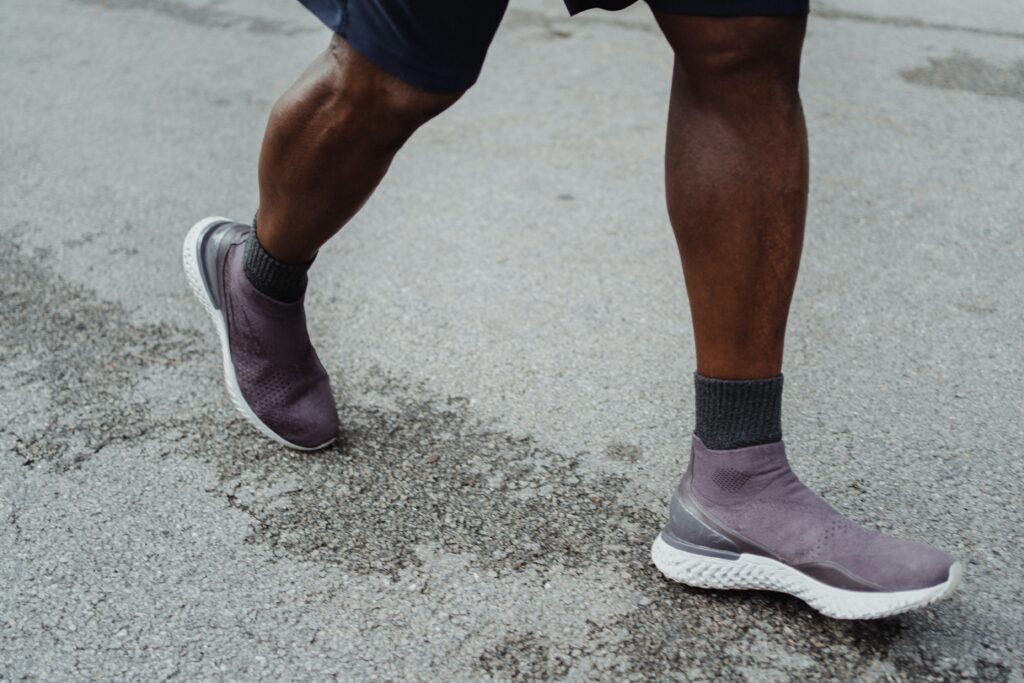Ankle Pain While Walking or Running
Struggling with ankle pain during brisk walks? Considering alternative exercises due to running discomfort? You’re not alone. Ankle dysfunction and limited progress in fitness regimens can be frustrating, but physical therapy offers relief and prevention strategies. Our blog post explores pain reduction and long-term management for walking and running with ankle pain.
Understand the Causes of Ankle Pain While Walking or Running
Ankle pain can be one of the most frustrating experiences when it comes to walking or running. It can make even the most routine activity seem daunting and forced. The causes of ankle pain can be varied and complex, but understanding them can make all the difference in finding relief. Some of the most common causes include sprains, fractures, and Achilles tendonitis. Poor footwear, improper form, and overuse can also contribute to ankle pain. Whatever the cause, it’s important to address the issue before it becomes more serious. By taking steps to identify and treat the underlying cause of your ankle pain, you can get back to the activities you love without discomfort and frustration.
Identify Signs of Injury, Stress, and Overuse
Our bodies are incredible and can withstand a lot of wear and tear, but sometimes they need a break. Identifying signs of injury, stress, and overuse is crucial to keeping our bodies healthy and functioning at their best. Some common signs of injury include pain, swelling, and limited mobility. Signs of stress may manifest as fatigue, depression, or even physical symptoms like headaches or stomachaches. Overuse injuries often present as pain that worsens with repetitive movements. Paying attention to these signs and taking action, such as rest or seeking medical attention, can prevent further damage and help us maintain a healthy, active lifestyle.
Evaluate Treatment Options such as Ice, Rest, and Physical Therapy
When it comes to caring for our bodies, we often rely on treatments like ice, rest, and physical therapy. Choosing the right option can be challenging, as each targets specific areas of the body with varying levels of success. While ice and rest work well for acute injuries, physical therapy is vital for rehabilitation and injury prevention. Working with a trained professional helps improve strength, flexibility, and range of motion, boosting overall well-being. So, whether it’s a minor injury or enhancing athletic performance, carefully evaluating options before settling on a treatment plan is crucial.
Explore the Benefits of Physiotherapy for Long-term Relief
Are you looking for a way to alleviate chronic pain or recover from an injury? Consider physiotherapy. This type of therapy is designed to help improve your mobility, manage your pain, and prevent further injury by incorporating therapeutic exercises, manual techniques, and education. It’s a holistic approach that focuses on treating the source of your pain rather than just the symptoms. Additionally, physiotherapy can benefit those with chronic conditions, such as arthritis or neurological disorders, by improving their quality of life. With long-term relief being the goal, physiotherapy has proven to be a valuable tool in achieving this.
Determine What Kinds of Exercises Help Strengthen Muscles Around Your Ankles
Your ankles play a significant role in your balance and stability, which is why it’s crucial to keep the muscles around them strong and supple. Some exercises that can help strengthen your ankles include calf raises, ankle circles, heel walks, and toe walks. Calf raises are a great way to target your calf muscles and improve ankle stability. Ankle circles, on the other hand, help to increase the flexibility and mobility of your ankle joint. Heel and toe walks are also fantastic exercises that help to strengthen the muscles around your ankles. By incorporating these exercises into your daily routine, you can help improve the overall strength and mobility of your ankles, which ultimately allows you to walk, run, and move with more ease.
Recognize When to Call a Doctor or Get Professional Help
Recognizing when to call a doctor or seek professional help is crucial for your overall health and well-being. Ignoring any signs or symptoms that suggest an underlying health problem can lead to serious consequences. Some symptoms, such as chest pain, difficulty breathing, and sudden loss of consciousness, should be taken seriously and require immediate medical attention. Other signs, such as persistent fever, chronic fatigue, and unexplained weight loss, may also indicate a more serious issue and warrant a visit to your healthcare provider. Don’t wait until it’s too late. Be proactive about your health and seek professional help when necessary. Your body will thank you.
Conclusion
Understanding the causes, signs, and treatment of ankle pain while walking or running is crucial. Seek professional help, utilize ice, rest, and physical therapy for relief. If pain persists, consult a doctor for long-term healing. Precautions like stretching, proper footwear, and avoiding unprepared activities can prevent future injuries.

